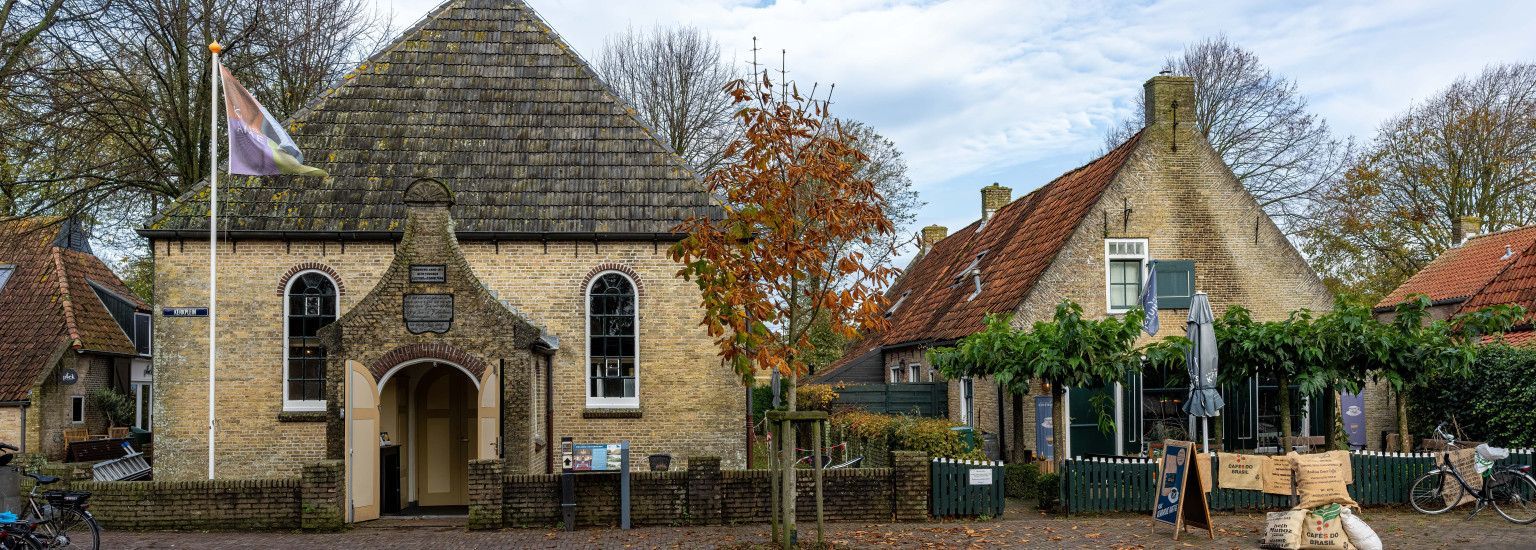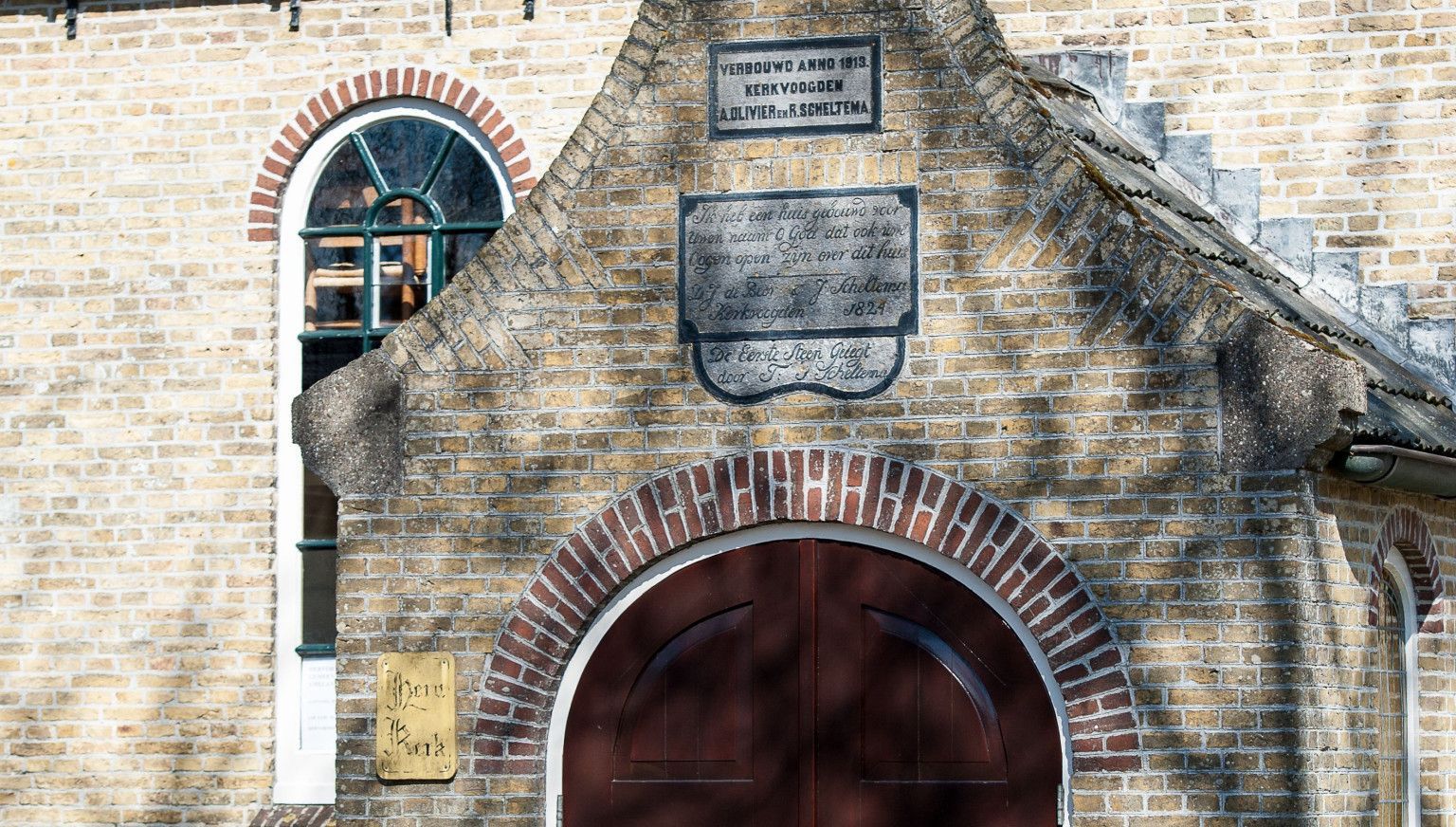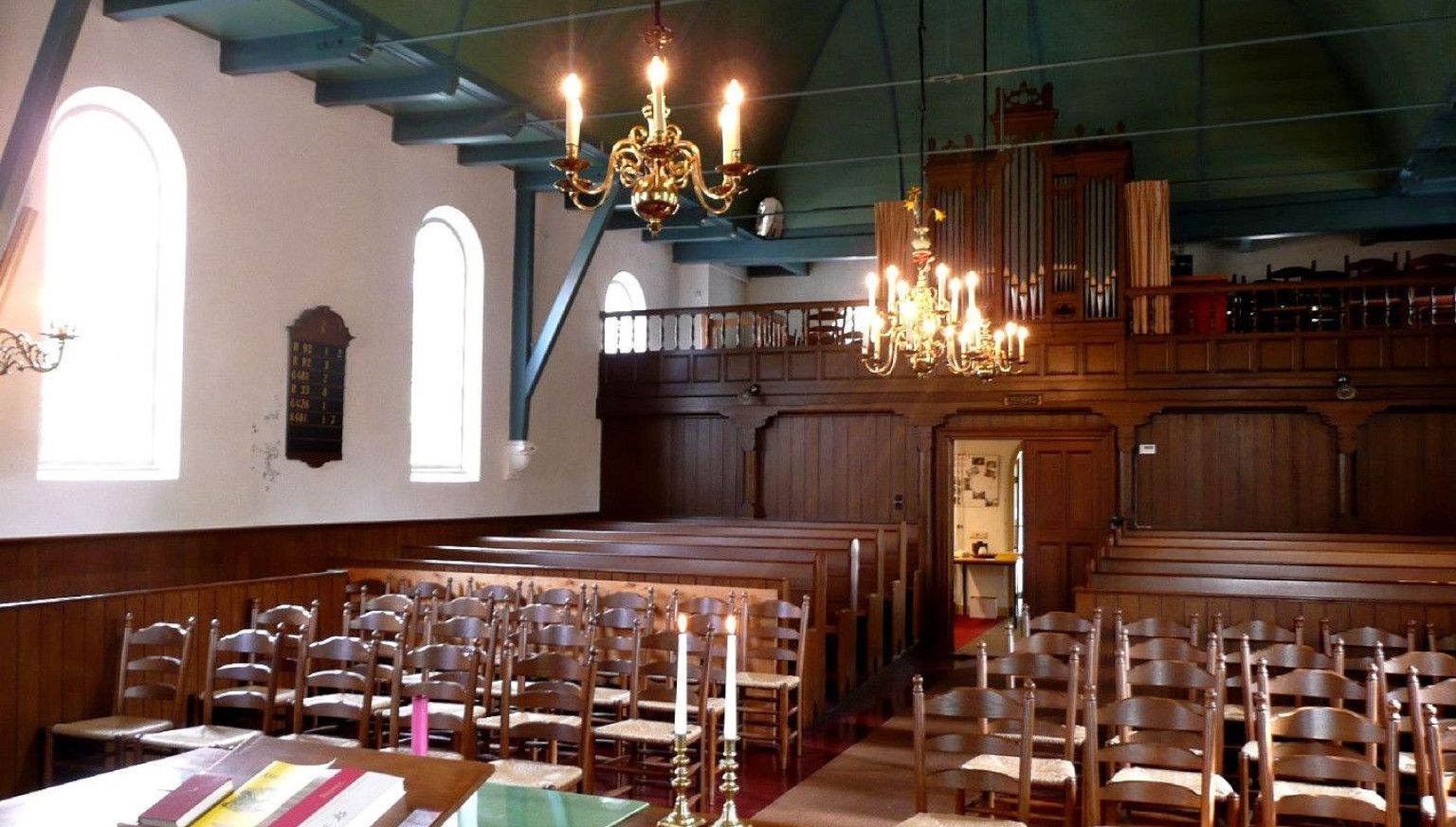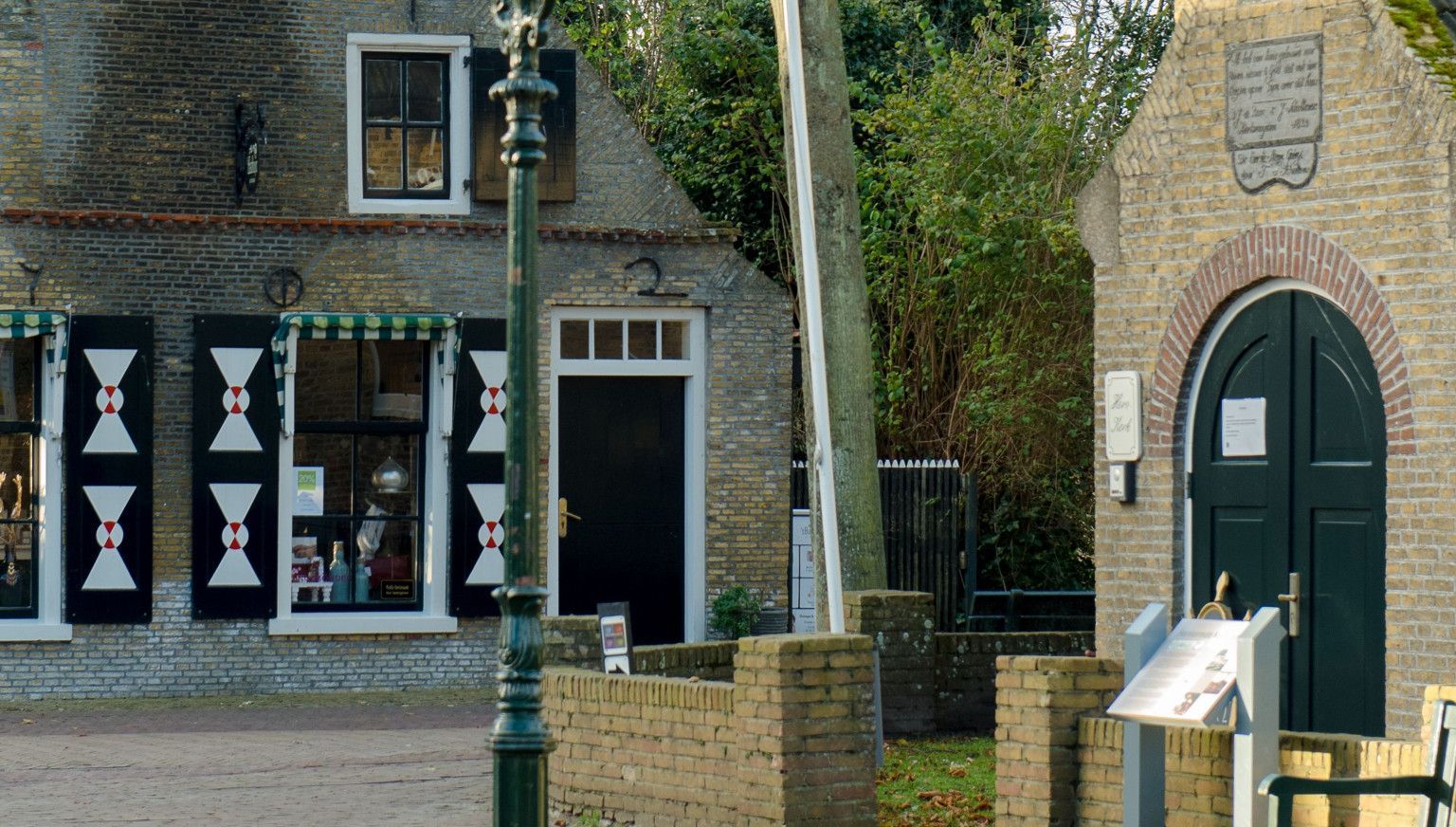
Former Dutch Reformed church Nes
The church was largely built in 1824 on foundations and retaining the west facade of a building from 1734.
The church has a simple pulpit and two richly decorated light arms. The organ is by fa. L. van Dam and Sons, the front dates from 1868 and the instrument from 1888.
Since 2024, the Amelander Culture Museum has been housed in the former Dutch Reformed Church.
Former Dutch Reformed church Nes
Kerkplein 1
9163 HB, Nes

West wall from 1734
It is almost certain that the west wall dates from the year 1734. The present appearance of the church is the result of a major rebuilding in 1824, of which a memorial in the south porch reminds us. During that rebuilding, a portal was built on the north and south wall with doors on two sides. In 1913, the north portal disappeared and the south portal was given a single entrance. Also from this restoration is a memorial in the south facade. That this north portal was dropped had a practical reason: draughts.

Interior
Through the dark, 19th-century entrance area, you enter the church hall. On the north wall is the early 19th-century pulpit, which ended up there in 1913. Before then, the pulpit was placed in the middle of the east wall. Most of the remaining furniture dates from the restoration of the early 20th century.

Rev. Mazade
The simple, but also striking crowns, were donated by the congregation in 1725. This was done as a token of appreciation for the enthusiasm of Rev Mazade, who preached a so-called love sermon twice a week in the evening. This means that the church building was probably already there in 1725. It cannot be ruled out that this started with the arrival of Rev Mazade (1723). His zeal was further rewarded with a beautiful Bible on the pulpit (1729) and a copper candlestick. The beautiful sacrament silver, which is still owned by the congregation, also dates from these years.
More donations
In the church we find other donations. The organ, for instance, was donated in 1862 by the descendants of Cornelis and Pieter van Straten, who were steward fiscal or bailiff on Ameland in the 18th century.
The most beautiful features of this little church, however, are the two murals above the church council pews. They were put there in the early 1950s, which at the time was by no means a matter of course for a Protestant church. The paintings, Elijah led by ravens and the miraculous catch of fish, were made by Jan Murk de Vries for the extremely friendly price of 100 guilders.
Source: ‘Rij d'r eens langs! Reisgids langs Amelander Kerken en Zerken', by J.H. Strubbe.